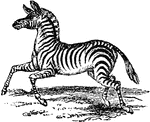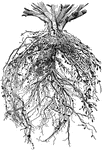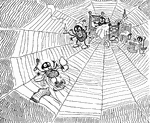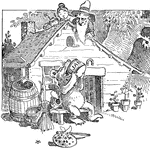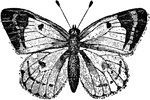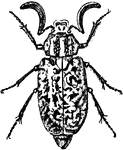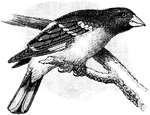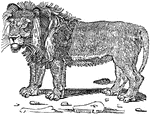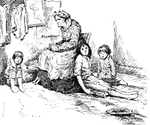
Trout
The name of various species of fish belonging to the salmon family, and abundant in almost all the rivers…

Turnips
A biennial plant of the mustard family, which is cultivated for its fleshy globular, edible root.

Vireo
A family of insect-catching birds. They are restricted to the American continent and range from Canada…

Warblers
The name applied to a family of perching birds, most of which are shy, small, and active, and have a…

Whitefish
The name commonly applied to several species of fishes of the salmon family. They are found mostly in…
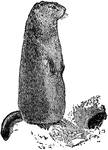
Woodchuck
An animal of the marmot family, which is native to the eastern part of North America, ranging from Alabama…

Yucca
A genus of plants of the lily family, having woody stems, lanceolate leaves, and a large panicle of…
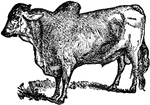
Zebu
A class of animals of the ox family, which are reared extensively from Japan to East Africa, but they…
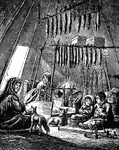
Ostiak Family
The Ostiaks are a tribe who inhabit the basin of the Ob in western Siberia belonging to the Finno-Ugric…
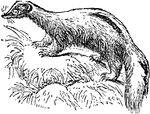
Common Skunk
Medium-sized mammals with black-and-white-fur belonging to the family Mephitidae and the order Carnivora.
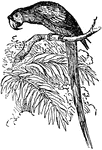
Macaw
Large colorful New World parrots. They are the largest birds in the parrot family in length and wingspan.

Viper
Venomous snakes belonging to the Viperidae family. They are characterised by long erectile fangs, which…

Aralia
A genus of the plant family Araliaceae, consisting of about 30 species of deciduous and evergreen trees…
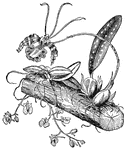
Orchis Family
This is an illustration of oneidium papilio and comparettia rosea, two epiphytes of the Orchis family.…
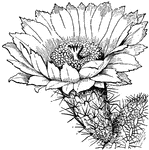
Mammillaria
The genus Mammillaria is one of the largest in the cactus family Cactaceae. the distinctive feature…

Bass Viol
The viol is a family or musical instruments and is related to and descending from the vihuela and rebec.
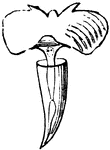
Cleodora
Cleodora refers to a genus of plants in the family Euphorbiaceae. The best known member of this genus…
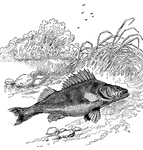
Yellow Perch
This is an illustration of the Yellow Perch. A perch is a freshwater bony fish belonging to the family…
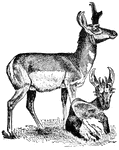
Antelope
A group of herbivorous African animals of the family Bovidae, distinguished by a pair of hollow horns…

Leaky Drain
This illustration shows how putrefying animal matters from a leaky drain and an overflowing cess-pool…

Washington Coat of Arms
The Washington family coat of arms. It is possible that this design had an influence on the creation…
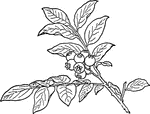
Huckleberry
"The fruit of various species of Vaccinium and Gaylussacia, genera which belong to the heath family…
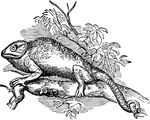
Chameleon
"A genus of saurian reptiles, constituting a distinct family, of very peculiar form and structure, and…
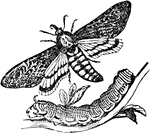
Death's Head Moth
"A species of Hawk-moth or lepidopterous insect of the family Sphingidae, not uncommon in some parts…
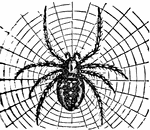
Epeira Diadema
"A genus of spiders, the type of a family called Epeirdae. They are of those spiders which have only…

Magnified Louse
"A genus of insects, the type of a very numerous family, which forms the order Parasita or Auoplura.…

Apollo Butterfly
Parnassius Apollo, a butterfly of the Papilionidae family. Also known as the Apollo Mountain Apollo.…

Morphidae
"The family Morphidae contains the largest and most splendid of the South American butterflies. Their…
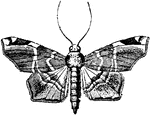
Pyralidina
"The Pyralidina are a group of small moths readily distinguished by their long slender bodies and large…
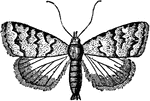
Pyralidina
"The Pyralidina are a group of small moths readily distinguished by their long slender bodies and large…
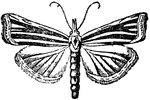
Pyralidina
"The Pyralidina are a group of small moths readily distinguished by their long slender bodies and large…

Pyralidina
"The Pyralidina are a group of small moths readily distinguished by their long slender bodies and large…
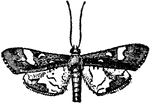
Pyralidina
"The Pyralidina are a group of small moths readily distinguished by their long slender bodies and large…

Tortricina
"The Tortricina include a great number of small moths exceedingly injurious to orchard and other trees.…

Genet
"A genus of carnivorous mammals belonging to the Viverridae or family of civets. It contains six species,…

Harp
"This primitive-looking instrument was played horizontally, being born upon the performer's shoulder.…
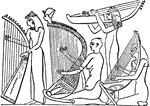
Harp
"This primitive-looking instrument was played horizontally, being born upon the performer's shoulder.…
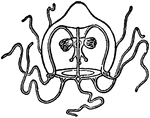
Lizzia
"Medusiform person (Lizzia), one of the Anthomedusae, detached from a hydroid colony of the family Endendridae.…

Sarsia
"Medusiform person (Sarsia), one of the Anthomedusae, detached from a hydroid colony of the family Corynidae.…
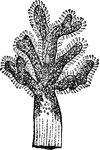
Alcyonium
"A genus of Zoophytes, the type of family called Alcyonide, belonging to the class anthozoa, and order…

Alcyonium
"A genus of Zoophytes, the type of family called Alcyonide, belonging to the class anthozoa, and order…

Alcyonium Digitatum
"A genus of Zoophytes, the type of family called Alcyonide, belonging to the class anthozoa, and order…
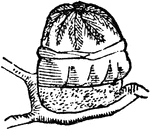
Alcyonium Digitatum
"A genus of Zoophytes, the type of family called Alcyonide, belonging to the class anthozoa, and order…
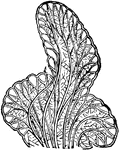
Alcyonium Digitatum
"A genus of Zoophytes, the type of family called Alcyonide, belonging to the class anthozoa, and order…

Chub
"A fish of the family Cyprinidae, of the same genus with the roach, dace, bleak and minnow. The color…
Basset Horn
"A wood-wind instrument, not a "horn," member of the clarinet family, of which it is the tenor. The…

Buddha
"The sacred name of the founder of Buddhism, an Indian sage who appears to have lived in the 5th century…

